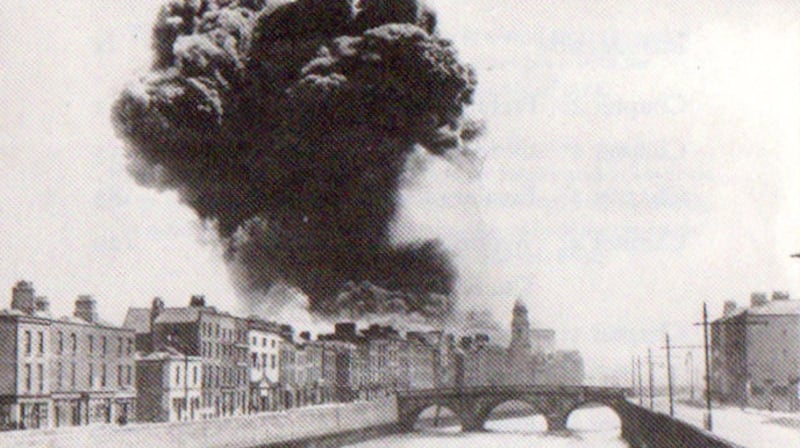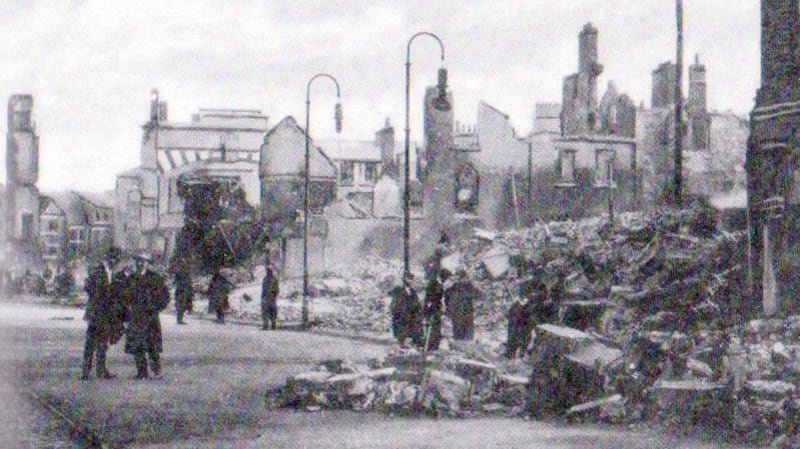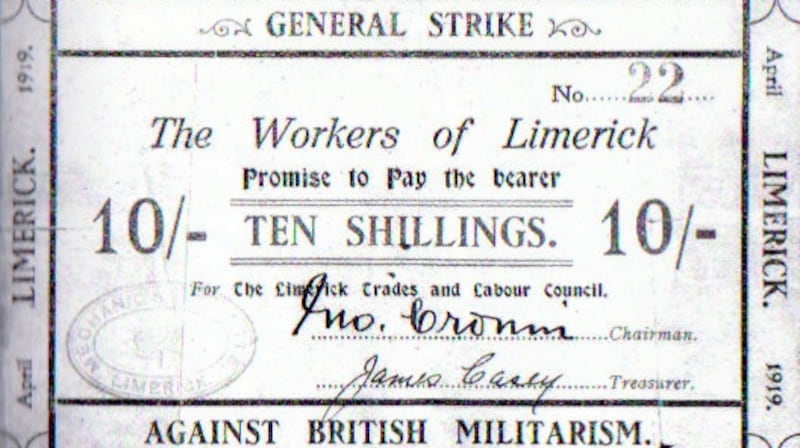Written in a fast-paced style, The Battle of the Four Courts (Head of Zeus, £20) by Michael Fewer recreates the three action-packed summer days in Dublin that ignited the Civil War at the end of June 1922. A scene-setting background shows that in the spring, the country was in a chaotic state with 331 raids on post offices and 319 on trains.
On June 28th at about 4am, the first shots of the war were fired when Michael Collins’s provisional government began shelling anti-Treaty IRA troops who had made the Four Courts their headquarters. Through newly discovered photographs and 3D digital models providing a better sense of what really happened, Fewer’s research shatters myths about the battle.
The kernel of the book deals with the 60 hours of fighting. The author concludes that during the early part of the siege, there was “an almost universal disinclination, on both sides, to cause injury to their opponents.”A fascinating blend of political, military and architectural history, this book places the reader in medias res in the company of a large dramatis personae.

Cork Burning
In Cork Burning (Mercier Press, €19.99) Michael Lenihan deals with the night of 11th –12th December, 1920 when the commercial and civic heart of Cork city was destroyed by British forces. The destruction was in reprisal for a number of attacks, including an IRA ambush two weeks earlier at Kilmichael which resulted in the deaths of 17 Auxiliaries.

During the destruction, one side of Patrick Street was razed to the ground, while the City Hall and Carnegie Library were burnt by the Auxiliaries and Black and Tans who shot at Cork’s firemen and cut their hoses in an effort to ensure maximum damage. Exceptional black-and-white images illustrate the devastation of streets with business premises reduced to rubble by the conflagration.
War and Revolution in the West of Ireland, Galway, 1913-1922
The revolutionary decade has produced compelling books covering the social and political micro-histories of the period in specific counties. War and Revolution in the West of Ireland, Galway, 1913-1922 (Irish Academic Press, €16.99) by Conor McNamara incorporates a 10-year period divided into seven sections. It looks at the activities of ordinary men and women who took part in the struggle for independence. In 1916 Liam Mellows had led his volunteers in a rising in east Galway when up to 650 rebels took up defensive positions at Moyode Castle.
Limerick, The Irish Revolution, 1912-23
Staying in the west, Limerick, The Irish Revolution, 1912-23 (Four Courts Press, €19.95) by John O’Callaghan considers the social, political and military battleground. The Easter Rising may have been a damp squib in Limerick but the area was especially prominent during the War of Independence, not only through its republicanism, but also through socialist and agrarian activists.

The story is recounted of the ‘Limerick Soviet’, a self-declared soviet from April 15th-27th, 1919, which took the form of a general strike organised by Limerick Trades and Labour Council in protest against the British army’s declaration of a “special military area” covering most of the city and county. The soviet ran the city for the period, organised the supply of food, gas, electricity and water, and even printed its own currency in denominations of one shilling, five shillings and 10 shillings.
Kilkenny In Times of Revolution, 1900-1923
Some parts of the country, including Co Kilkenny, have been overlooked in coverage of the period but now Kilkenny In Times of Revolution, 1900-1923 (Merrion Press, €19.99) by Eoin Swithin Walsh rectifies this with previously unseen archival material covering a wider period.
For the first time, combatants and civilians who died during the truce and the Civil War are recorded, revealing an even more deadly conflict than previously believed, although the author reflects on the fact that the Kilkenny brigade were “gentle revolutionaries”. The most dramatic event in the county was in November 1921 when 43 republican prisoners escaped by tunnelling out of Kilkenny jail. More would have escaped if one of the prisoners, David Connolly, had not tried to bring his suitcase with him since it became wedged in the tunnel, preventing those behind from getting through.
The Irish Regional Press, 1892-2018, Revival, Revolution and Republic
If journalism is the first draft of history, then the revolutionary period led to no shortage of thrilling copy for reporters working for the local press. A considerable number of the 14 chapters in The Irish Regional Press, 1892-2018, Revival, Revolution and Republic (Four Courts Press, €40) edited by Ian Kenneally and James T O’Donnell, cover the events of that decade.
In a series of essays, the book looks at the rise and importance of the work of news journalists in Cork, Kerry, Sligo and other areas. One essay highlights the rivalry between the Cork newspapers, the Southern Star and the Skibbereen Eagle. The Eagle was renowned for its sarcasm and oft-parodied comment “watchful eye on the czar of Russia”. Its readership was mainly unionist, while prominent republican figures such as Tadgh Barry, Peadar O’Hourihan, and Seán
Hayes were attached to the Star.
Derry: The Irish Revolution, 1912-23
The historiography of Ulster and the upheaval during this period is covered in Derry: The Irish Revolution, 1912-23 (Four Courts Press, €19.95) by Adrian Grant. Using newly-released sources, he considers in nine crisply-written chapters how in 1912 the city, a busy port with a thriving textile industry, was also politically divided and was seen as a microcosm of divisions within the two communities.

Despite a large nationalist majority, local government was controlled by the unionist establishment which led to charges of gerrymandering and discrimination. Street violence in the city and towns was accompanied by mass mobilisations of the Ulster and Irish Volunteers who were on a collision course halted only by the outbreak of war in 1914.
The Time of the Tans, An oral history of the War of Independence in County Clare
The Time of the Tans, An oral history of the War of Independence in County Clare (Mercier, €19.99) by Tomás MacConmara explores the stories of the Black and Tans since March 1920. The book is based on two decades of the author’s oral history recordings, selected from over 400 interviews, along with access to private family collections.
Through direct testimonies of people such as Margaret Hoey (who was recorded in 2008 at the age of 105) the emotional stories reflect the fear and pain of living through a violent and dangerous period. The interviews show a deeply layered landscape of memory in families and local communities of Clare which have shaped and affected the stories recalled at a public level.
Revolutionary Dublin 1912-1923, A Walking Guide
Revolutionary Dublin 1912-1923, A Walking Guide (Collins Press, €14.99) by John Gibney and Donal Fallon outlines many of the locations in the city that were associated with the activities and campaigns of the time. The guide is broken down into five walks covering most parts of the city with numerous stops at commemorative plaques as well as monuments and battle-damaged buildings of historic significance.










